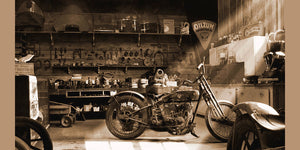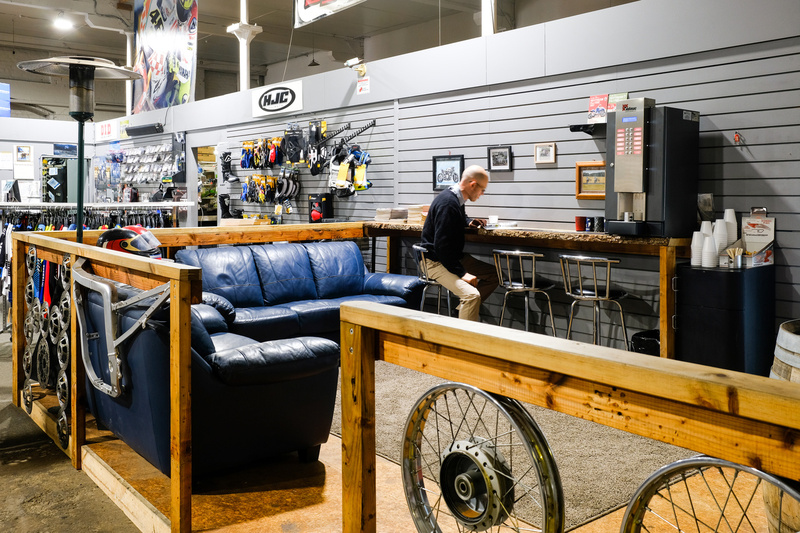Check Out the most up to date Motocross Gear NZ for Every Degree of Rider
Check Out the most up to date Motocross Gear NZ for Every Degree of Rider
Blog Article
Recognizing the Important Parts of a Motorcycle: A Comprehensive Overview for Enthusiasts
For bike enthusiasts looking to elevate their riding experience and guarantee their bikes run smoothly, understanding the crucial parts of a bike is critical. Each aspect, from the engine's elaborate functions to the crucial role of the braking mechanisms, not just impacts efficiency however likewise security and convenience.
Engine Elements

The camshaft plays a vital duty in regulating the timing of the engine's valves, guaranteeing the specific opening and closing essential for efficient fuel and air intake, in addition to exhaust expulsion. This timing is important to keeping ideal engine performance and effectiveness. Furthermore, the carburetor or fuel shot system, relying on the bike design, is in charge of blending air with gas in the right ratio for burning.
The cooling system, either air or liquid-based, works to keep the engine's temperature level within functional limits, avoiding overheating and ensuring long life - motocross gear. Each component, meticulously created and incorporated, contributes to the seamless procedure of the engine, specifying the motorcycle's power result and total efficiency
Transmission System
Integral to the bike's functionality, the transmission system makes sure efficient power transfer from the engine to the wheels. This system comprises a number of essential components, including the clutch, gearbox, and final drive, each playing an essential duty in converting the engine's power right into activity. The clutch, typically operated by a hand bar, offers to disengage the engine and engage from the transmission, permitting smooth equipment adjustments and regulated acceleration.
The transmission, usually referred to as the transmission proper, contains a collection of gears that cyclists can by hand shift via to adjust the bike's rate and torque outcome. These gears are set up in a sequence that allows the motorbike to speed up smoothly and preserve ideal engine performance throughout numerous speeds. The majority of motorcycles use a sequential gearbox, requiring the cyclist to change gears in a fixed order.
Braking Systems
While comprehending the transmission system is key to using a motorbike's power, just as important is the ability to control and quit that power successfully, which is where stopping devices come into play. Brakes are essential for safety and security and performance, offering the cyclist with the required control to browse various terrains and problems. Usually, bikes include two kinds of braking systems: disc brakes and drum brakes.
Disc brakes are much more prevalent in modern-day motorbikes due to their superior efficiency. They consist of a brake disc, caliper, and pads. When turned on, the caliper squeezes the brake pads against the spinning disc, converting kinetic energy into heat, thus slowing down the wheel. This system supplies far better warmth dissipation, consistent performance, and enhanced stopping power, specifically in wet conditions.
Conversely, drum brakes, though less typical, are still located in some bikes. They function by pushing brake shoes against the internal surface area of a drum connected to the wheel. While typically much less reliable in warm dissipation and quiting power, drum brakes are easier and more economical.
Comprehending these braking systems' subtleties enables motorcyclists to preserve their bikes properly and appreciate the design that guarantees effective and safe quiting.
Suspension and Guiding
Suspension and steering systems are important parts that dramatically affect a motorcycle's handling and trip comfort. The suspension system, containing forks at the front and shock absorbers at the rear, absorbs road irregularities, boosting stability and control. Front forks, upside down or typically telescopic, compress and rebound to mitigate effects, while back shock absorbers maintain tire call with the road, vital for grip and security.
Steering, centered around the handlebars, attaches the motorcyclist to the motorcycle's directional control. The steering head bearings make sure smooth procedure, enabling precise ability to move. Correct positioning and maintenance of these bearings are vital for predictable guiding reaction and lowering a knockout post rider exhaustion.
The suspension's adjustability is another vital aspect; preload, damping, and rebound settings permit customization to match different riding conditions and styles. This flexibility is important for maximizing efficiency, whether browsing urban streets or dealing with rugged trails. Technologies like electronic shock absorber use real-time modifications, boosting ride top quality throughout varied terrains.

Electrical Systems
After making sure a smooth and regulated adventure via efficient suspension and steering systems, attention turns to the electric systems, a pivotal facet of contemporary motorbikes. These systems play an important duty not only in beginning the engine but likewise in powering various parts that boost the capability and security of the bike.
At the heart of a motorbike's electrical system is the battery, which stores electric energy essential for starting the engine and powering auxiliary systems - mx gear nz. The alternator or generator, combined with the rectifier-regulator, ensures the battery continues to be charged while the motorbike is in operation, converting power right into electrical power and keeping voltage degrees
The ignition system, another critical element, is in charge of sparking the air-fuel combination in the engine's cyndrical tubes. Modern motorcycles often use article a digital ignition system, using better efficiency and dependability compared to conventional systems.
Lighting systems, including headlights, tail lights, and indicators, are additionally vital, guaranteeing presence and security for the motorcyclist. Added electronic components such as sensing units, control devices, and shows add to sophisticated functions like fuel shot administration, anti-lock braking systems (ABDOMINAL), and electronic control panels, even more enhancing the riding experience.
Final Thought
A thorough understanding of a motorcycle's essential parts, consisting of the engine, transmission system, stopping systems, suspension, steering, and electric systems, is indispensable for lovers intending to enhance safety and security, performance, and convenience. Proficiency of these aspects enables for informed decisions relating to maintenance and upgrades, inevitably boosting the riding experience. By integrating this knowledge, bikers can guarantee their motorcycles run at peak performance and reliability, thus making best use of both pleasure and durability of their automobiles.
For motorcycle lovers looking to raise their riding experience and ensure their bikes run efficiently, comprehending the important components of a motorcycle is vital.Important to the motorcycle's functionality, the transmission system guarantees efficient click for more info power transfer from the engine to the wheels.While understanding the transmission system is vital to using a motorcycle's power, similarly important is the capability to manage and stop that power efficiently, which is where stopping mechanisms come right into play. Generally, motorbikes include two types of braking systems: disc brakes and drum brakes.
A comprehensive understanding of a bike's crucial elements, consisting of the engine, transmission system, braking systems, suspension, guiding, and electric systems, is indispensable for lovers aiming to enhance convenience, efficiency, and security.
Report this page